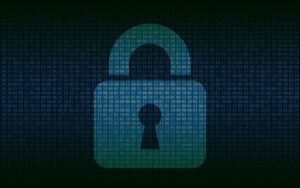7 Ways To Secure Your Wireless Printer And Protect Your Network
 Many people worry about their computer being hacked, but often overlook the possibility of their wireless printer getting breached. Most individuals use the printer sporadically, for tasks such as printing tax forms or mailing labels.
Many people worry about their computer being hacked, but often overlook the possibility of their wireless printer getting breached. Most individuals use the printer sporadically, for tasks such as printing tax forms or mailing labels.
Regular users tend to disregard printers as they are usually out of sight and out of mind, until the moment when ink runs out and something needs to be printed. However, unsecured printers are an attractive target for criminals looking to gain access to a home network.
To illustrate this vulnerability, Cybernews intentionally hacked printers globally. They successfully hijacked nearly 28,000 unsecured printers, achieving a 56% success rate. Once they gained access, the hackers ironically made the printers print out a guide on printer security.
If you are concerned about the exposure of your network through your printer, we have provided some security tips below to assist you. Implementing these tips enhances the security of your network and helps protect the data on all your devices.
1. Change the Default Login Credentials
When purchasing a new printer, it probably came with preconfigured default information provided by the manufacturer. They provide you with a means to connect and configure your device, which typically involves default login information.
You must promptly modify this information during the setup process. Hackers exploit a comprehensive list of these defaults, inputting them into an automated script and systematically attempting each one until they find a successful match. Therefore, immediately change these default settings and ensure the creation of a robust password.
2. Keep Printer Firmware Updated
Ensuring the regular updating of firmware is crucial for maintaining the security of your printer. Like computers, software, and apps, hardware also requires updates. These updates frequently include vital security patches.
Unlike software updates that typically provide popup notifications, firmware updates are often less noticeable. Updates to the drivers and firmware that operate printers are not as prominently displayed.
To check for firmware updates, you can explore the following options:
- Utilize the utility app provided by the PC manufacturer on a connected device.
- Access the information panel on the printer itself.
- Install the printer manufacturer’s app on a PC.
3. Use a Network Firewall
An active network firewall plays a crucial role in ensuring network traffic monitoring. It blocks suspicious activity, thereby preventing hackers from accessing your network. You should configure the firewall to actively monitor both incoming and outgoing printer traffic.
4. Put Your Printer on a Guest Network
Today’s home routers typically offer the capability to establish a guest network, enabling you to create a separate Wi-Fi network that operates from the same router used for your main network. By doing so, it becomes more challenging for hackers to traverse between networks.
Enhancing security is achieved by isolating less secure devices from computers and phones. Despite the separation, it is still possible to print to your printer from devices connected to another network. Correct configuration makes it all work, so be sure to get help as needed during the configuration process.
5. Disable Unused Ports or Services
IoT devices, like printers, usually offer many ways to connect. You probably don’t need all the ports or services that come with your printer. These unused ports are risk areas where hackers could find a way in.
Disabling any ports and sharing features that you don’t need reduces the risk of a breach.
6. Unplug It When Not in Use
Work printers often get used more frequently than home printers. In the case of home printers, individuals may only utilize them once a month or a few times per year. If your printer is not in constant use, unplug it when it is not being used.
By disconnecting the device, you effectively eliminate a hacker’s access completely. When the printer is powered off and unplugged, no access is available whatsoever.
7. Teach Your Family Cybersecurity Best Practices
Your network includes multiple devices, and families often connect numerous devices to their home Wi-Fi. In 2022, the average U.S. household had 22 connected devices.
It is crucial for families to be aware of and adopt good cyber habits. These practices not only enhance the security of everyone’s data but also help prevent costly incidents such as identity theft breaches or the compromise of devices like baby monitors.
Here are some standard best practices to follow for maintaining good cyber hygiene:
- Always use strong passwords, consisting of at least 10-12 characters and a combination of letters, numbers, and symbols.
- Keep the software and firmware on your devices updated.
- Enable multi-factor authentication whenever possible.
- Activate device firewalls and other protective measures.
- Install reliable antivirus software on all devices.
- Never log in to an account by clicking on a link received via email or text.
- Learn how to identify phishing attempts and seek a second opinion before clicking on suspicious links.
- Consider getting a security checkup from a professional at least once every year or two.
Why Is This Published By A Business Phone Company?
Here at NoContractVoIP, we believe that your success creates our success. And, since we specialize in business communication, we work to help you communicate better while staying safe. We create the cutting edge communication systems that modern companies need. And we geek out on tech stuff, so we study it for you.
To talk to a business phone system specialist and never worry about any of this again, call 866-550-0005 or contact us today.
To get the latest helpful content delivered to your inbox every month, subscribe to our newsletter here.
